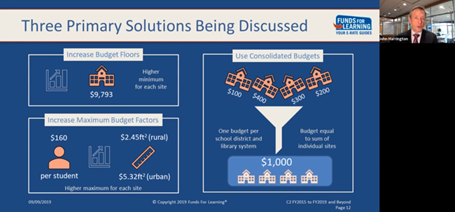There is a lot of information swirling around about E-rate Category Two discounts. New rules are being formulated that will impact schools and libraries for years to come. Quite frankly, unless you are really into E-rate regulations, all the news, comments, and ideas being tossed about can be a little confusing and overwhelming. This briefing is intended to help you make sense of it all. It includes a 20-minute video tutorial for those who would like to learn more about changes that are coming to E-rate Category Two discounts.
What is Category Two?
Category Two (“C2”) refers to the goods and services used on-campus to connect students and library patrons to the Internet. It includes the purchase and installation of wireless access points, data cabling and network switches. Applicants qualify for discounts of up to 85% on these items.
Category Two (“C2”) refers to the goods and services used on-campus to connect students and library patrons to the Internet. It includes the purchase and installation of wireless access points, data cabling and network switches. Applicants qualify for discounts of up to 85% on these items.
Why is Category Two being changed?
C2 was first implemented in E-rate funding year 2015. The FCC established it on a five-year trial basis. It has been very successful, helping more than 100,000 school and library sites deploy Wi-Fi networks. Based on this track record, the FCC is looking to make it a permanent part of the E-rate program.
C2 was first implemented in E-rate funding year 2015. The FCC established it on a five-year trial basis. It has been very successful, helping more than 100,000 school and library sites deploy Wi-Fi networks. Based on this track record, the FCC is looking to make it a permanent part of the E-rate program.
Will anything be different?
It depends on the what the FCC decides to do. The most likely changes involve these items:
It depends on the what the FCC decides to do. The most likely changes involve these items:
- Budget factors
- Consolidated budgets
- Eligible services
Budget factors are used to calculate the maximum C2 project cost that the E-rate program will support at a given site. This support is subject to a minimum amount that is referred to as the budget “floor”. The FCC is considering increasing the budget floor from $9,793 to $25,000 per site. Most of the E-rate community also recommends raising other budget factors in order to assist schools and libraries that need more financial support for Wi-Fi.
Consolidated budgets would allow multi-site applicants to pool their C2 budget amounts. The cost to install and upgrade Wi-Fi varies from site-to-site. Some are more expensive than others. This is especially true when it comes to older facilities. Applicants who serve multiple sites, such as school districts and library systems, would like to reduce this inequity by having the freedom to shift C2 budget amounts between their facilities.
Eligible services refer to the items that qualify for E-rate discounts. The current eligible services list excludes certain items that are considered by most to be a requirement for modern networks. For example, network management, security and content filtering are must-haves in almost every computer network, yet the existing eligible services list requires applicants to remove these items.
Other changes are also possible. Here are a few of them. The FCC could eliminate C2 sub-categories that are no longer necessary; the FCC could instruct USAC to fund projects up to the maximum amount, while allowing applicants to pay the difference if the project cost exceeds the budget amount; and the FCC could choose to administer each budget on its own separate five-year timetable determined by the applicant.
How do I learn more?
The following tutorial goes in to more detail about the C2 system and the changes that may be coming.
The following tutorial goes in to more detail about the C2 system and the changes that may be coming.
Want more? Here is suggested reading for more in-depth study and analysis:
- FCC Proposes Permanent C2 Budgets (link)
- Stakeholders Agree on C2 Reform (link)
- Strong Support for Category Two (link)
- C2 Reform Could Bring $100M+ Per Year (link)
- $37M per Year for Security a Small Price (link)
- Consolidated Budgets Could Really Help (link)
- Raising Minimum C2 Budget Lowers Shortfall (link)

